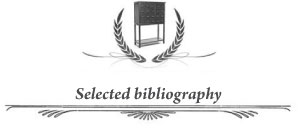Between 1 to 4 hours
Students are asked to explore the document and answer eight questions. The student is asked, on three occasions, to carry out complementary research in order to write a short text of 150 to 250 words
In order to allow students to research a specific question, four subjects are suggested. The teacher could propose one of the activities to the students, or he/she could allow them to choose one of the four questions themselves. The allotted time for this activity, and the expected results, is left to the teacher’s discretion.
Copyright – Morrin Centre - 2008 |
Between 1824 and 1924, the Literary and Historical Society of Quebec (LHSQ) published hundreds of works, primarily republishing archival documents and literary, scientific or historical conferences, all of which were offered to members of the Society. These works were a testimony to the increase in cultural and intellectual activity in the country. They present research undergone in the 19th century regarding science, history and literature as well as the reprinting of primary sources dealing with the beginnings of Canada. This activity was conceived to allow students to discover Canada’s first learned society, which began in the 19th century and continues its activities to this day. This activity constitutes an introduction to the literary and historical life of Quebec in the 19th century. 1.Search the virtual library in order to find at least one document pertaining to the history of the Literary and Historical Society of Quebec (LHSQ).You can have a look at the document entitled ‘‘Defining Primary and Secondary Sources’’, published by Michael Eamon on the Library and Archives Canada, to assist you for questions 2 and 3. [http://www.collectionscanada.gc.ca/education/008-3010-e.html]. 2. In your opinion, is this document a primary or secondary source? Justify your answer. 3. In order to judge the quality and relevance of the text, answer the following key questions: ‘‘What’’, ‘‘Who’’, ‘‘When’’, ‘‘Where’’ and ‘‘Why’’.
Questions based on the reading of the text «Histoire de la Société Littéraire et Historique de Québec» by Louis-Philippe Turcotte. In order to facilitate the acquisition of information we suggest numbering the text’s paragraphs from 1 to 77. 1. While reading paragraphs 3 and 7, indicate the date when the LHSQ was founded. 2. Who initiated the founding of the LHSQ? 3. What was the LHSQ’s goal in the beginning? 4. Au paragraphe 11, on mentionne des publications effectuées par la LHSQ. Quel titre portent-elles ? 5. In your opinion, where women admitted into the Society? Begin your research by reading paragraphs 11, 12, 13 and undergoing additional research. Your text (to be annexed to these questions) should number between 150 and 250 words. 6. Paragraph 27 mentions the publication of the 2nd volume of the Transactions, which includes a text by Joseph Perrault on education in Lower Canada. Find Joseph-François Perrault’s text in the virtual library and note its title as well as the internet link to find it. 7. Paragraphs 29, 30 and 31 discuss the Abbot Jean Holmes. What exactly does Abbot Holmes do for the benefit of the Literary and Historical Society? What was the use of these undertakings in the 19th century? Your text (to be annexed to the questions) should be between 150 and 250 words. 8. At paragraph 59 the author broaches the work of James MacPherson LeMoine in the following terms: ‘‘je vous dirais combien M. LeMoine a travaillé à mettre plus d’union entre les deux populations, combien il a réussi à faire connaître notre histoire à la race anglaise’’. Do a short biographical research on M. LeMoine to explain Louis-Philippe Turcotte’s extract. Your text (to be annexed to the questions) should be between 150 and 250 words.
While the LHSQ was Canada’s first learned society, numerous other institutions of this type were founded afterwards. Choose one of these societies and write a short text to present it. Your text should be between 275 and 400 words, approximately 20 to 30 lines. Paragraphs 14, 15, 16, 17, 73 and 76 are particularly useful for this research. OR At paragraph 19 we learn that the royal charter created by the LHSQ lists the founding members of the LHSQ. Each student must choose an individual from the list and present a short biography on that individual. The biography should be the equivalent of a page, with a picture of the chosen individual, if possible. Once the presentations have been done (the presentation format is left to your discretion: text, poster, oral presentation, website, a play…) discuss the socio-economic profile of the LHSQ’s members. OR Paragraph 27 mentions the publication of the 2nd volume of the Transactions, which includes a text by Joseph Perrault on education in Lower-Canada. In the introduction to his text he mentions that ‘‘je me suis cru appelé, nommément, à entrer en lice sur cet important objet, qui m'occupe depuis plus de vingt ans, et sur lequel j'ai déjà émis mon opinion’’. Who is Joseph-François Perrault to claim having been implicated for over 20 years in education? Do a short research in order to write a text between 275 and 400 words, approximately 20 to 30 lines. OR At paragraph 43 the author mentions that in the middle of the 19th century ‘‘se distinguaient une phalange d’écrivains sérieux’’, and he names five: Christie, Garneau, Parent, Chauveau and Crémazie. Divide the class into five groups. Each group will choose one of the writers and present a biography of that writer to the entire class. Once the presentations are done a general portrait of the literature of the time should begin to emerge.
Copyright – Morrin Centre - 2008
|










